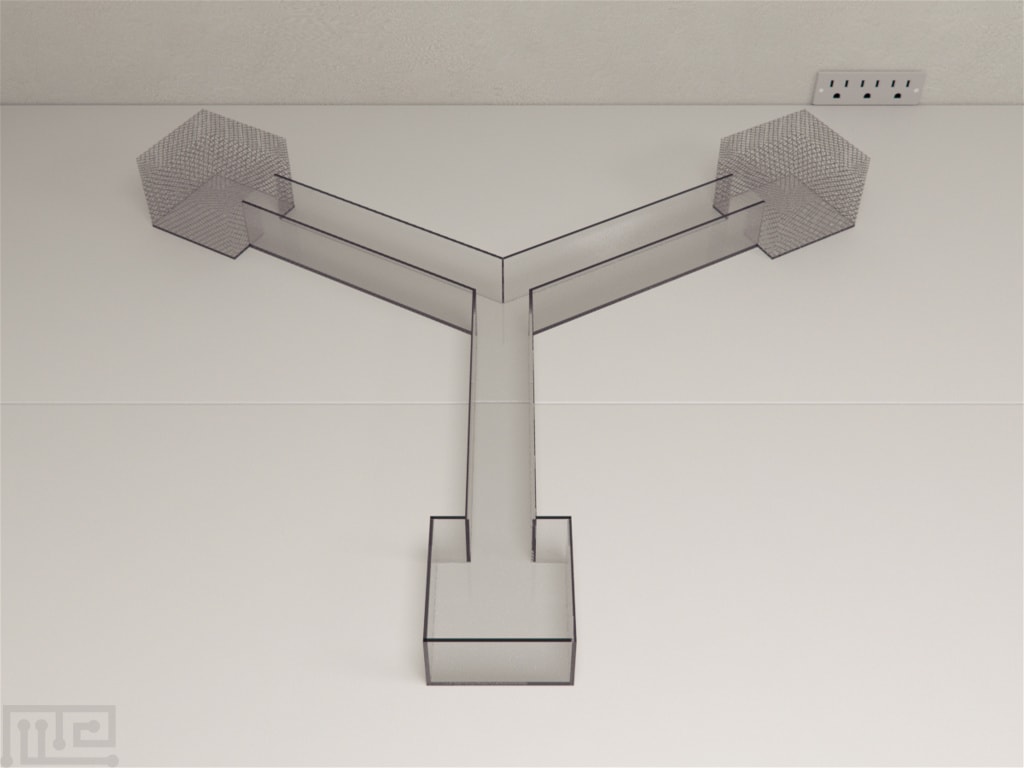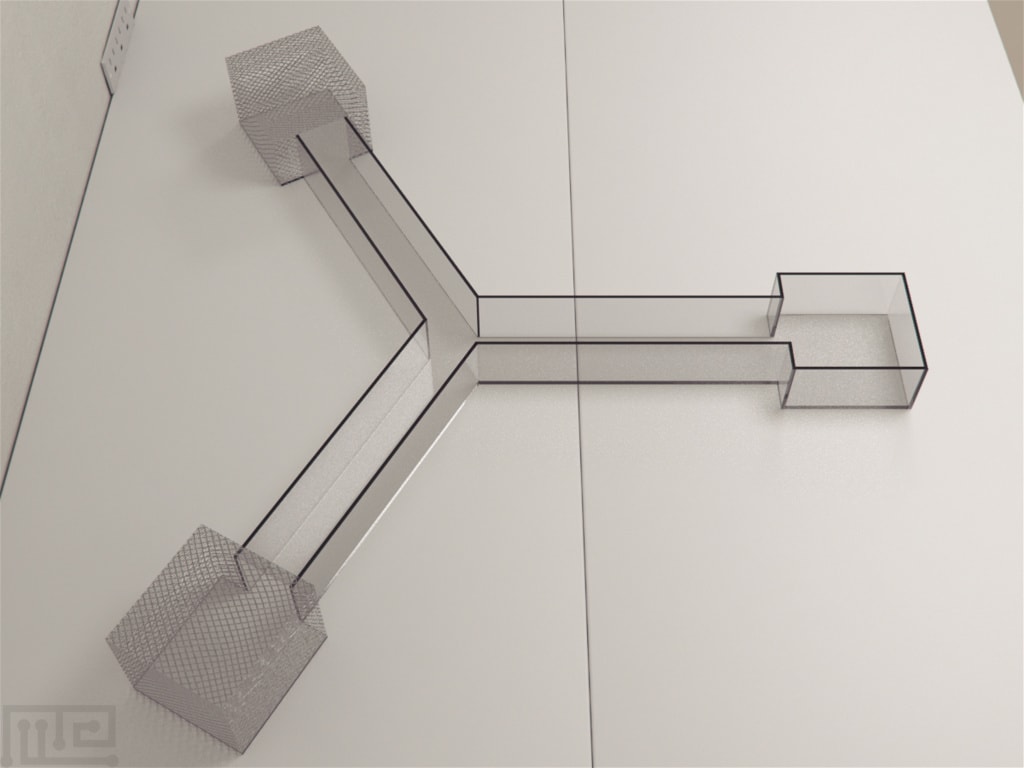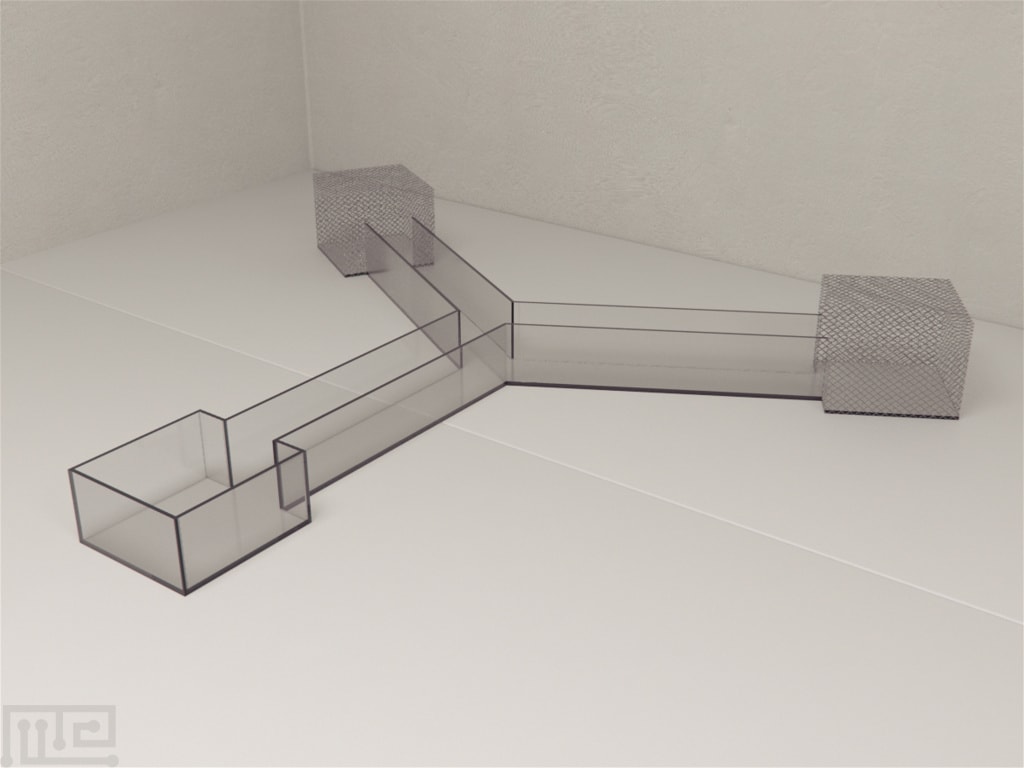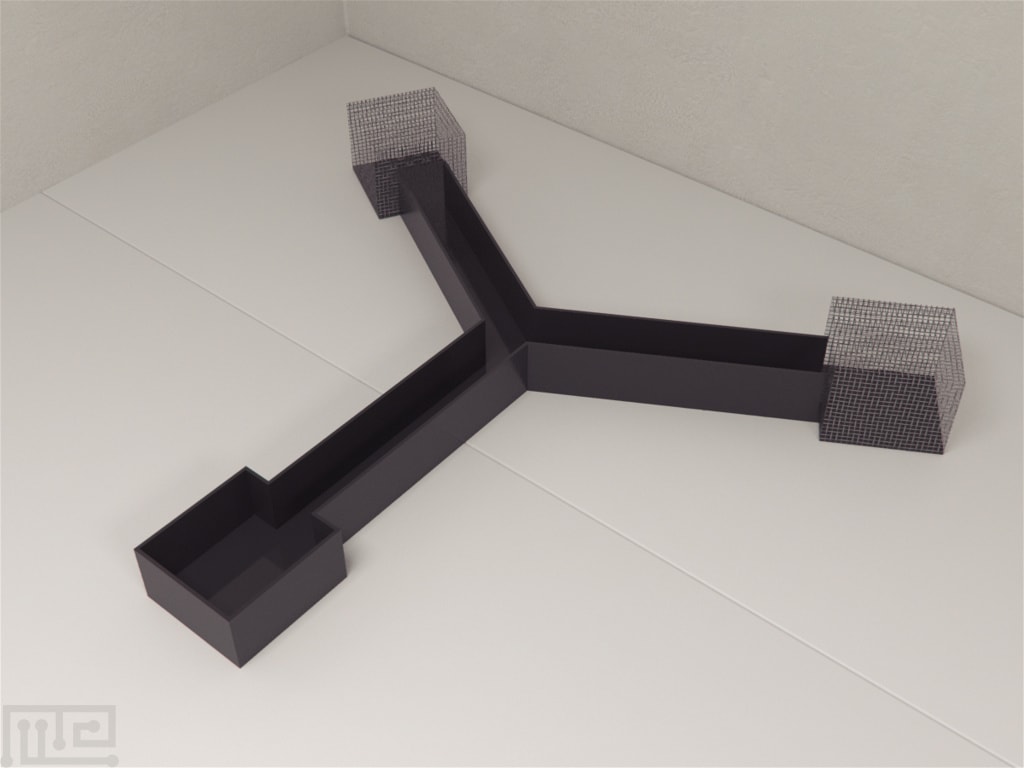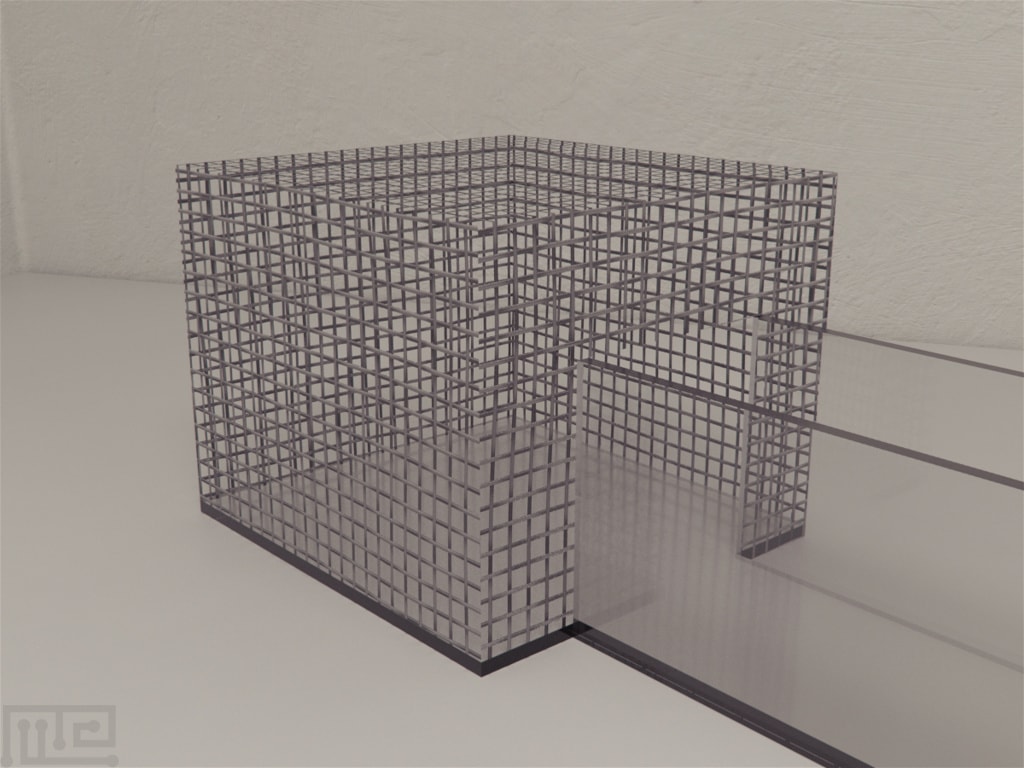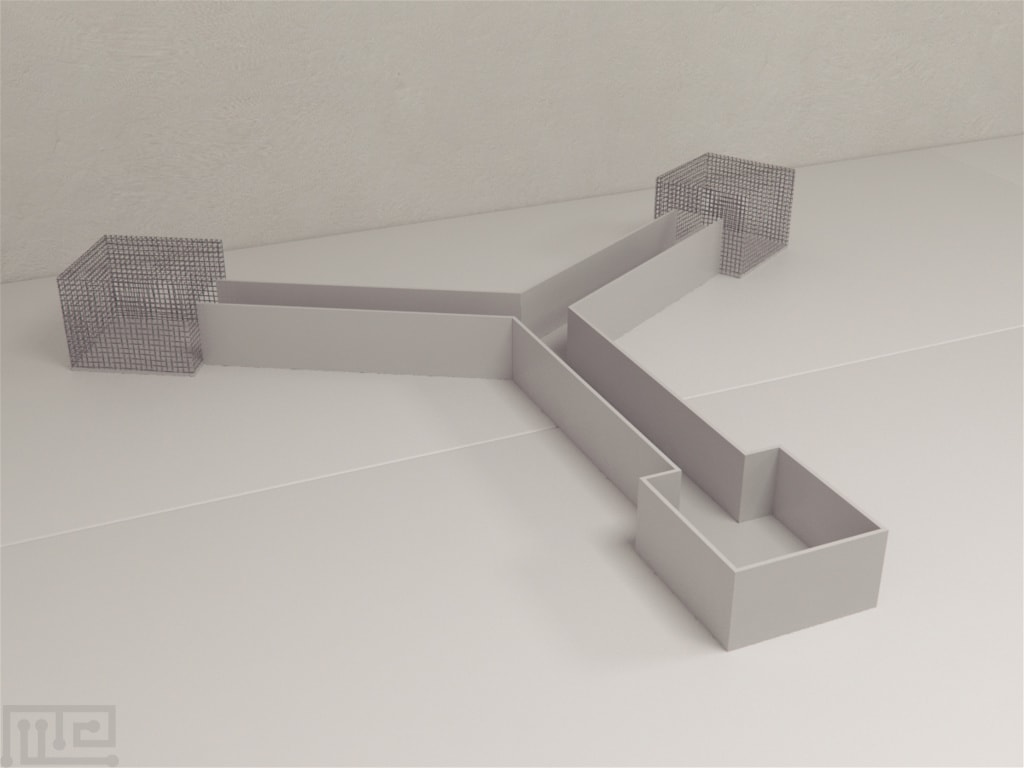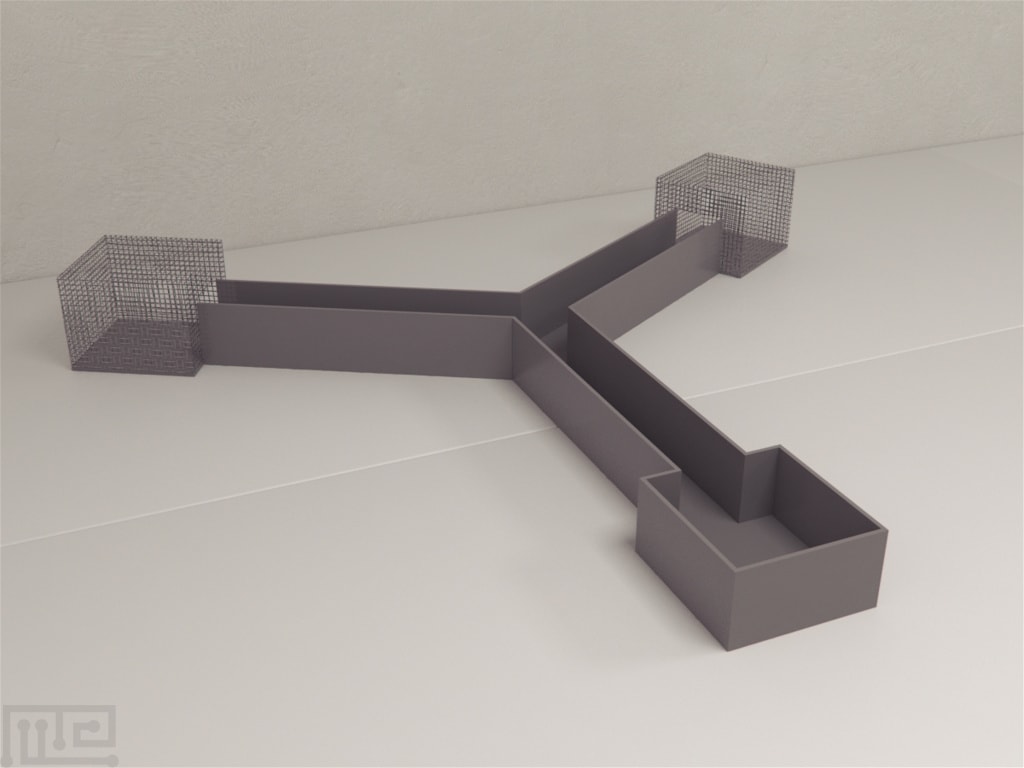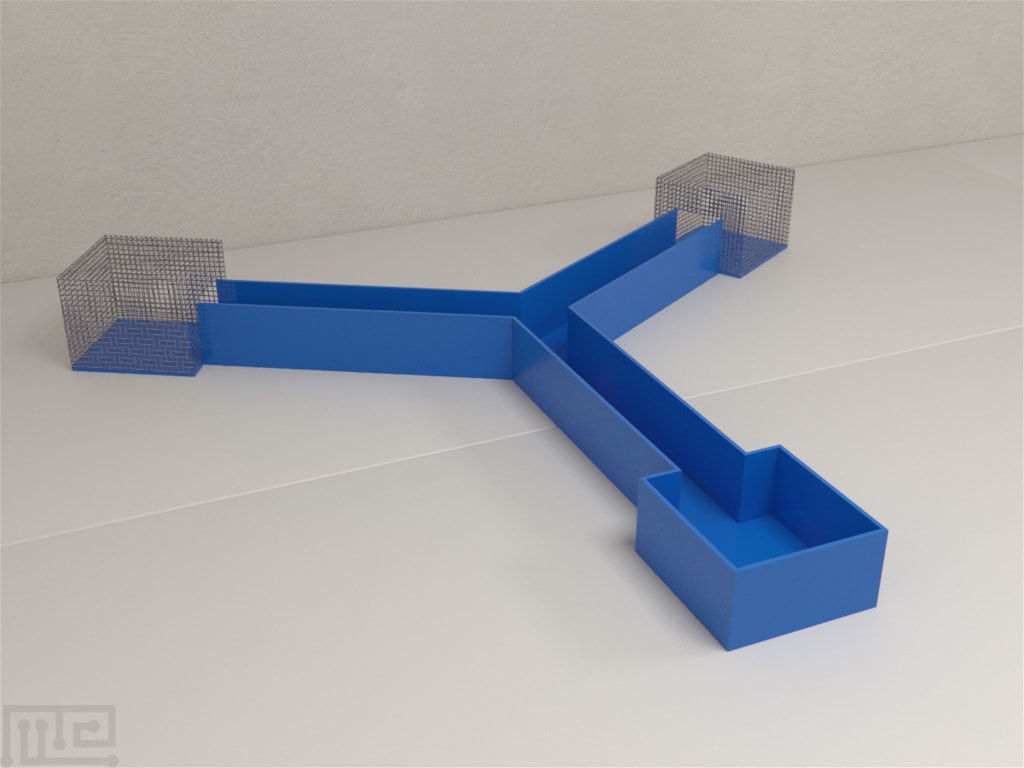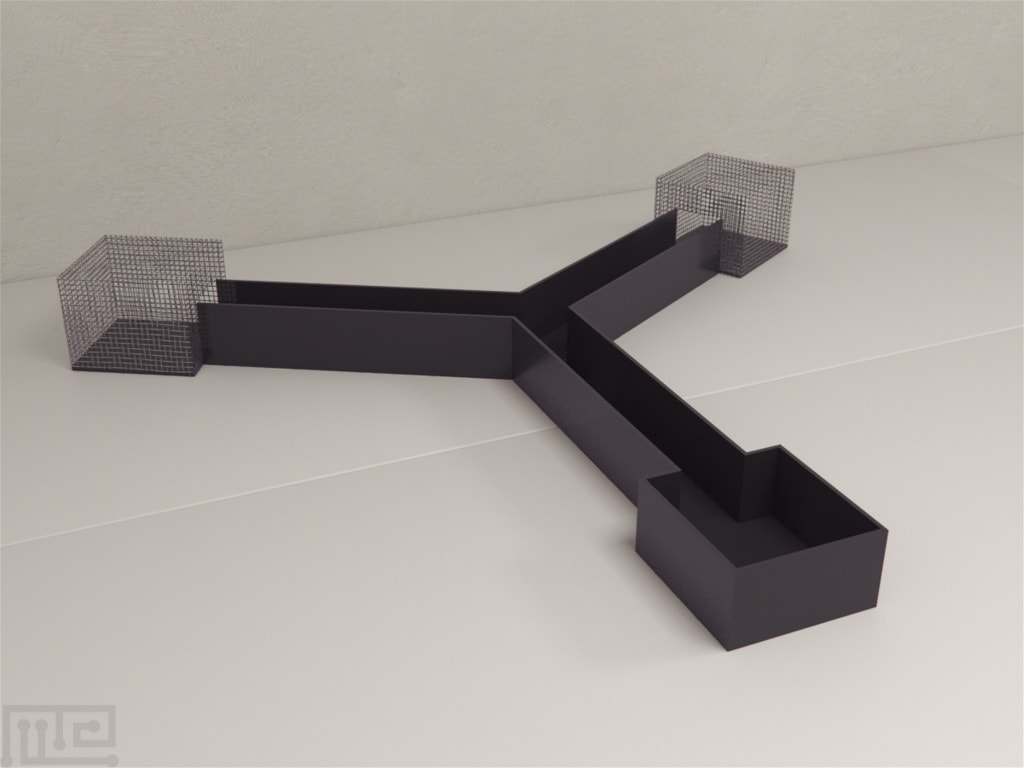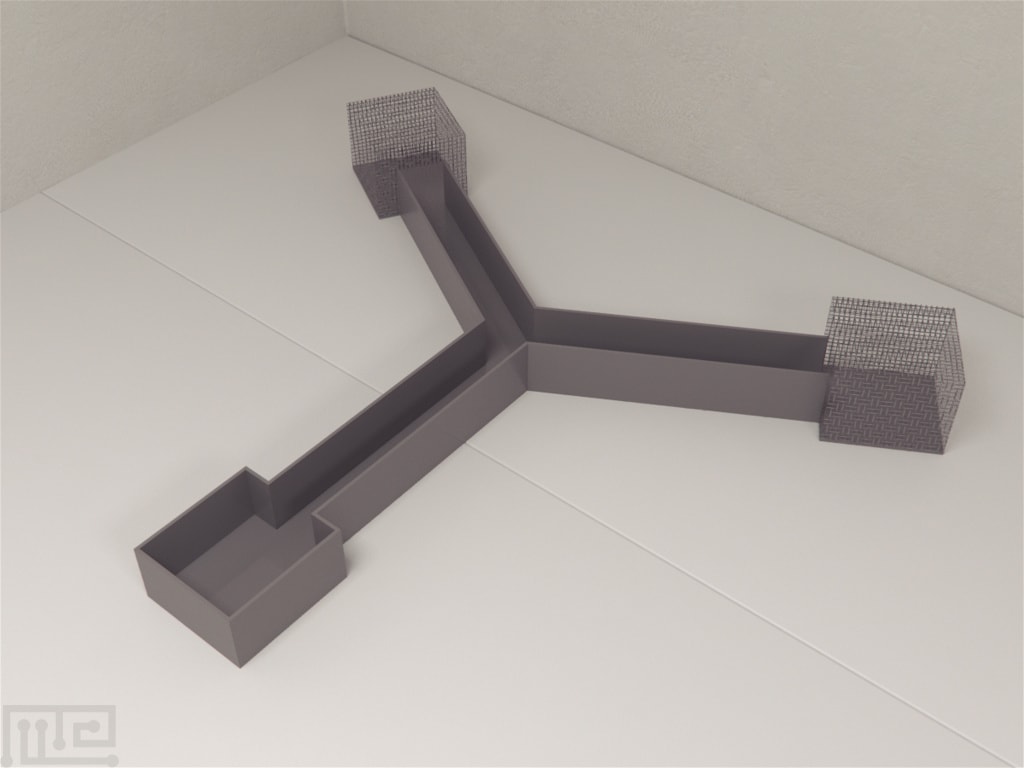As a variant of the original Y Maze, the Social Y maze was first described by Weber-Stadlbauer et al and replicated by Vuillermont in analyzing social interaction choices in rodents. Sizes are standard for mice and rats, but with the key modification being pair of rectangular wire grid cages. In the protocol, one wire cage contained an unfamiliar rodent (usually same sex as test mouse), and the other one contained a “dummy object.” The Mazeengineers modification of the Y maze includes two removable rectangular wire grid cages for social interaction.
Price & Dimensions
Mouse
$ 2560
for modification of Base Y maze- Central triangular area: 8 cm sides
- Three identical arms: 50 cm long, 10 cm high and 9 cm wide
- Three end wire cages
Rat
$ 2960
for modification of Base Y maze- Central triangular area: 12.8 cm sides
- Three identical arms: 80 cm long, 16 cm high and 14.4 cm wide
- Three end wire cages
Are you an academic scientist and creator?
Learn how your lab can tech transfer this and similar devices from your lab to industry.
Documentation
Introduction
Social Y-Maze is a modification of the Y-Maze (see also T-Maze). The apparatus is used to access the social interaction choices in rodents. Impairments in social interactions can arise from neuropsychiatric disorders such as Schizophrenia, Bipolar disorder, and neurodevelopmental disorders such as Autism Spectrum disorder (ASD). The development of effective treatments requires a cohesive understanding of the underlying causes that lead to social interaction impairments, and the observation of social interactions in disease models. The Social Y-Maze enables observation and evaluation of drug effects on social choices. Other assays based on social interactions include Sociability Chamber, Social Reward Chamber, and Visual Burrow Systems.
The Social Y-Maze is a simple apparatus with natural turn angles as opposed to the T-Maze. The maze construct includes a base Y-Maze with rectangular wire cages at ends of the goal arms. Usually, experimenters study social interaction choices using a dummy object in one arm and a live conspecific in the other.
Apparatus & Equipment
The Social Y-Maze is a plexiglass Y-Maze with a central triangular area of 8 cm sides from which three identical arms emerge. The arms are 50 cm long, 10 cm high and 9 cm wide. One of the arms serves as the start arm, while the remaining two are used as the goal arms. The goal arm ends are equipped with rectangular wire cages that are used to hold the live conspecifics or objects.
Training Protocol
Before beginning the sessions, clean the apparatus thoroughly to avoid the unnecessary influence of any lingering cues. Ensure the apparatus is well-lit. Tracking and video recording can be performed using software such as the Noldus Ethovision XT.
Pre-training
Habituate the subjects to the maze over the course of 2 days. Allow 10 minutes’ exploratory sessions per day to familiarize the subject with the maze set-up. Unfamiliar conspecifics used for the experiment may also require habituation training to the wire cages.
Social interaction trials
Place the unfamiliar conspecific (preferably same sex as the test subject) in one of the wire cages of the goal arms. In the other wire cage place a dummy object such as a small plastic block. Place the subject in the start arm and initiate the social interaction trial. The trial should last at least 5 minutes. On completion of the task, remove the subject and the conspecific from the maze and place them in their home cages.
Evaluation of transgenerational effects of prenatal immune activation
using C57Bl6/N mice generated three generations of polyI:C or control offspring. On gestation day 9, pregnant dams either received a single injection of poly(I:C) (5 mg/kg; potassium salt) or vehicle (sterile pyrogen-free 0.9% NaCl). The offspring of these dams (F1) were weaned and sexed on postnatal day 21. Breeding pairs were selected from F1 offspring on postnatal day 70 onwards to produce subsequent generations. The offspring not chosen for breeding were used in behavioral testing. This process was done until F2, and F3 generations were obtained. Subjects of each generation were tested on the Social Y-Maze. Result analysis revealed that poly(I:C)-exposed F1 offspring showed impairment of social interactions. A similar observation was made in the F2 generation.
Investigation of Vitamin D treatment in preventing autism-related phenotypes
Vuillermot used C57BL6/N offspring of pregnant dams divided into 4 treatment groups. Groups consisted of pregnant females that were first injected subcutaneously with 1,25OHD (VitD) or vehicle (VEH) followed immediately by intravenous injection of either poly(I:C) (POL) or saline solution (CON) on gestation day 9. This led to the following 4 combinations: CON/VEH, CON/VITD, POL/VEH and POL/VITD. Subjects were individually tested in the Social Y-Maze task. Results suggested a significant interaction between MIA and VitD. The percentage time spent with the unfamiliar conspecific significantly decreased in POL/VEH group in comparison to CON/VEH group.
Data Analysis
The following data can be observed from the Social Y-Maze task.
- Latency to initiate exploration
- Latency to make a choice
- Percentage time spent with the dummy object
- Percentage time spent with live conspecific
- Time spent in the goal arm containing the dummy object
- Time spent in the goal arm containing the live conspecific
- Time spent in the start arm
- Time taken to reach the goal arm end
Social interaction is defined as nose orientation towards the wire cage within a 6-cm interaction zone adjacent to the wire cage.
Other behavioral observations such as immobility and anxiety-like behavior can also be recorded as per the needs of the investigations.
Strengths & Limitations
Strengths
The Social Y-Maze is a simple assay for the evaluation of social interactions. It requires minimal time and training to perform, and its simplicity allows for easily reproducible results. As opposed to the T-Maze, neurodevelopmental and neuropsychiatric disorders in a simple set-up. The task can also be used in other clinical investigations such effects of drugs or lesions on social interactions.
Limitations
The Social Y-Maze is a single-point two-choice only maze. Thus, the subject’s choice of interaction is limited to the choices it is presented with. The choice of unfamiliar conspecific can have an impact on the performances of the subject as can the dummy object. Other factors such as disturbances during the maze performance (olfactory, auditory or visual) can affect the subject’s performance.
Summary & Key Points
- Social Y-Maze is a modification of the Y-Maze.
- The goal arms of the social Y-Maze are equipped with rectangular wire cages to hold live conspecific or dummy object.
- Social interaction impairments can arise from neuropsychiatric and neurodevelopmental disorders.
- Interaction with the live conspecific or the dummy object allows the measure of subject’s sociability.
References
Vuillermot, S., Luan, W., Meyer, U., & Eyles, D. (2017). Vitamin D treatment during pregnancy prevents autism-related phenotypes in a mouse model of maternal immune activation. Molecular Autism, 8(1), 9. https://doi.org/10.1186/s13229-017-0125-0
Weber-Stadlbauer U, Richetto J, Labouesse MA, Bohacek J, Mansuy IM, Meyer U. Transgenerational transmission and modification of pathological traits induced by prenatal immune activation. Mol Psychiatry. 2017;22(1):102–112.

